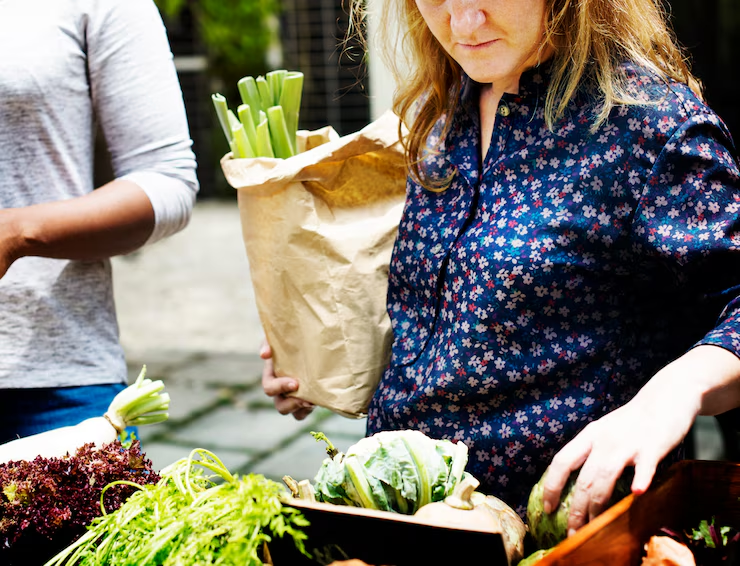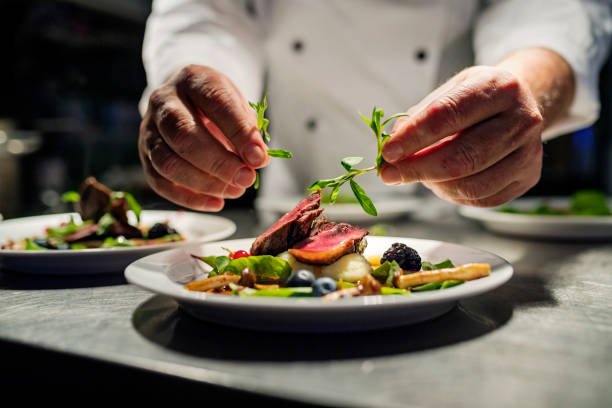The Ever-Evolving World of Food & Drinks Culture Trends and Innovation
Food and drinks have always been central to human life—not just for survival but for celebration, expression, and community. In today’s globalized and fast-paced world, the food and beverage industry is witnessing an exciting evolution. From street food stalls to Michelin-starred restaurants, and from ancient recipes to futuristic plant-based innovations, the world of food and drinks is diverse, dynamic, and deeply connected to culture, health, and sustainability.
Cultural Connection
Every culture has its own culinary identity, shaped by hi story, geography, climate, and tradition. Italian pasta, Japanese sushi, Indian curries, and Mexican tacos are just a few examples of how food reflects the soul of a community.
Food is often the centerpiece of family gatherings, religious rituals, and national celebrations. Think of the Thanksgiving turkey in the United States, Eid feasts in Muslim countries, or Chinese New Year dumplings. These traditions strengthen cultural bonds and pass on values from one generation to the next.
Similarly, drinks play a key role in cultural traditions. Tea ceremonies in Japan, coffee rituals in the Middle East, and wine in European dining traditions all reveal how beverages contribute to social customs and identity.

Global Fusion and Modern Trends
One of the biggest trends in the food and drink industry today is global fusion—the blending of ingredients and cooking techniques from different cultures to create exciting new flavors. Korean tacos, sushi burritos, and butter chicken pizza are just a few examples of how chefs are mixing traditions to appeal to adventurous diners.
Street food has also gone global. Once seen as humble, local fare, street food is now celebrated worldwide for its authenticity and flavor. Food trucks, night markets, and pop-up restaurants have made it easier than ever to explore different cuisines affordably.
Other significant trends include:
-
Plant-based eating: Driven by health, environmental, and ethical concerns, more people are turning to vegetarian and vegan options.
-
Fermented foods: Kombucha, kimchi, and kefir are gaining popularity for their gut-health benefits.
-
Sustainable dining: Consumers are looking for eco-friendly options, including locally sourced ingredients, minimal packaging, and waste reduction.
Health and Nutrition: A New Priority
The link between diet and health is more understood than ever. People are not just eating for taste—they’re eating for energy, fitness, and wellness. The rise in popularity of superfoods like quinoa, blueberries, avocados, and kale reflects this shift.
Functional foods and beverages are also trending. These are items designed to improve health beyond basic nutrition. Examples include:
-
Probiotic yogurts for digestion
-
Protein shakes for muscle recovery
-
Herbal teas for relaxation or immunity boosts
The demand for natural and clean-label products is growing too. Consumers are reading labels more carefully, avoiding artificial additives, excess sugar, and preservatives.

The Rise of Technology in Food & Drink
Technology is transforming the food and beverage industry. In restaurants, online ordering apps, digital menus, and robotic kitchens are streamlining operations. In homes, smart kitchen gadgets like air fryers, smart fridges, and meal planning apps help people cook more efficiently.
Even more revolutionary is the development of lab-grown meat and 3D-printed food. These innovations could solve global challenges like food insecurity and environmental degradation.
Food delivery services like Uber Eats, Food panda, and Door Dash have also reshaped the way people dine. With a few taps, gourmet meals or everyday snacks can arrive at your doorstep.
Beverage Innovations
The drinks segment is equally dynamic. From craft coffee to healthy juices, there’s a growing interest in beverages that provide not only refreshment but also functional benefits.
Sustainability and Ethical Eating
Food production has a significant impact on the planet. Deforestation, overfishing, and food waste are major concerns. As a result, sustainability has become a key focus in the food and beverage industry.
Consumers are asking questions like:
-
Where does my food come from?
-
How was it produced?
-
What is its environmental footprint?
This has led to a rise in eco-conscious practices:
-
Supporting local farmers through farmers’ markets and community-supported agriculture (CSA)
-
Reducing food waste by promoting nose-to-tail cooking and composting
-
Choosing seasonal produce to reduce carbon emissions from transportation
-
Minimizing plastic use in packaging
Restaurants are also embracing sustainability by sourcing local ingredients, reducing water usage, and offering plant-based menus.

Key trends include:
-
Third-wave coffee: A movement that treats coffee as an artisanal product, with emphasis on origin, brewing method, and flavor.
-
Alcohol-free cocktails (mocktails): Popular among health-conscious drinkers who still want the social experience.
-
CBD-infused beverages: These drinks aim to promote relaxation and stress relief.
-
Low-sugar and plant-based milks: Oat, almond, soy, and coconut milks are alternatives to dairy and are widely used in coffees and smoothies.
Social Media and Food Aesthetics
Instagram, Tik Tok, and YouTube have turned eating and drinking into a visual experience. Food isn’t just about taste anymore—it’s about presentation. Viral trends like rainbow bagels, coffee, or charcoal ice cream show how aesthetics can drive food popularity.
Food influencers, bloggers, and vloggers also shape what people want to eat. Recipes go viral overnight, and small eateries can become famous thanks to one well-placed photo or review.
The Importance of Local and Seasonal Eating
While global fusion is exciting, many food movements are encouraging a return to local, seasonal, and traditional eating. This approach:
-
Supports local farmers
-
Reduces the carbon footprint of food transportation
-
Enhances freshness and nutrition
Farmers’ markets, organic co-ops, and “farm-to-table” restaurants are promoting the idea that food should be sustainable, ethical, and community-focused.
Food as an Experience
More than ever, food and drinks are being treated as experiences. Whether it’s a luxury tasting menu, a themed restaurant, a cultural food tour, or a cooking class, people want immersive interactions with what they eat and drink.
This has given rise to experiential dining—restaurants where ambiance, performance, storytelling, and interaction all play a part in the meal. Dining in the dark, underwater restaurants, and virtual reality dinners are just a few examples.

The Future of Food & Drinks
The food and drinks industry is likely to keep evolving with changes in consumer preferences, environmental challenges, and technology. Future trends may include:
-
Personalized nutrition based on DNA
-
Edible packaging
-
AI-generated recipes
-
Insect protein and seaweed-based foods
As the industry grows more innovative, one thing remains unchanged: food and drinks will continue to bring people together, tell stories, and shape how we live.
Conclusion
The world of food and drinks is more than just a collection of meals and beverages—it is a reflection of our culture, our health choices, our environment, and our innovation. Whether you’re a gourmet chef, a home cook, a food blogger, or simply someone who loves to eat, there’s never been a more exciting time to explore what’s on your plate and in your glass.

